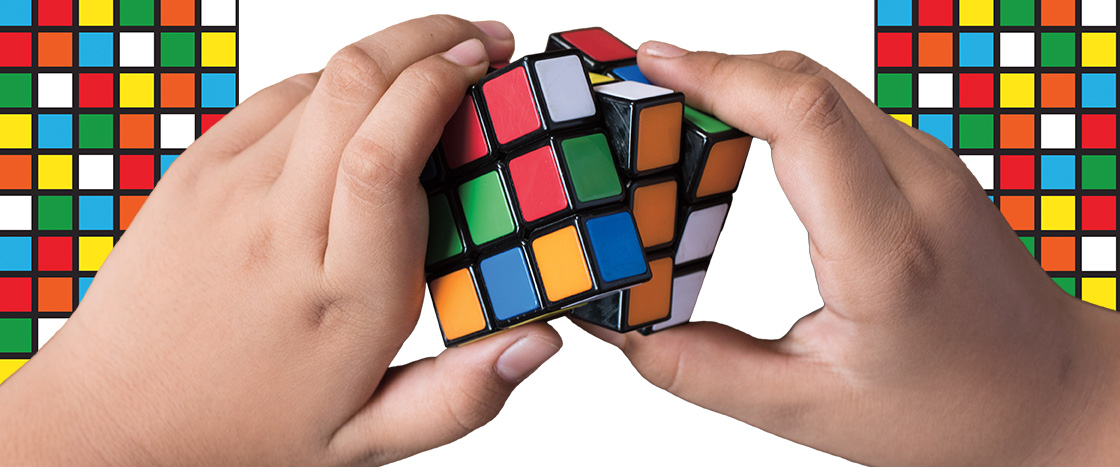The goal is to twist parts of the cube until each side is all one color!
Go to the Solve It page of the Rubik’s Cube site to watch videos or download documents that teach how to solve many different styles of cubes.

Why you should give this 50-year-old toy a try (if you aren’t a fan already!)
PA Images/Alamy Stock Photo (Erno Rubik); COURTESY OF RUBIK’S CUBE/WWW.RUBIKS.COM (Magic Cube); krishna dev/Alamy Stock Photo (Pyramid); Mirko Popadic/Alamy Stock Photo (Silver Cube); Schwan Park (Max Park); Shutterstock.com (All Other Images)
The goal is to twist parts of the cube until each side is all one color!
A Long History
1974
A teacher from Hungary, Erno Rubik, makes the first cube out of wood. He calls it the Magic Cube.
1980
The toy is renamed the Rubik’s Cube. It’s a hit all over the world.
Today
You can find the toy in many shapes and sizes!
Solving a Rubik’s Cube Can . . .
By the Numbers
Write to Win
Create a flyer about starting a Rubik’s Cube club at your school. Explain why kids should join, using details from the infographic. Entries must be submitted to “Cube Contest” by a teacher, parent, or legal guardian.* Five winners will each receive a a $20 gift card for the Scholastic Store Online.
*Entries must be written by a student in grades 2-8 and submitted by their teacher, parent, or legal guardian, who will be the entrant and must be a legal resident of the U.S. age 18 or older. Visit the Storyworks Contests page for more information.
This infographic was originally published in the February 2024 issue.
1. Reading and Discussing
Project the infographic as students follow along in their magazines.
Prompt students to use the headline, subhead, and central image to identify the topic of the infographic.
Ask: Is the purpose of the infographic to
Have students look over the labels and images surrounding the central image. Ask:
Break students into groups to read each section of the infographic and discuss what they find interesting, surprising, or convincing.
Come back together as a class and ask volunteers to summarize the main idea and supporting details from the infographic.
2. Writing
Preview the writing prompt in the “Write to Win” box.
Download and distribute the guided-writing activity that goes along with the infographic.
Have students respond to the writing prompt. If you wish, send their responses to our infographic contest.
3. Ideas to Engage and Inspire
Have students create their own infographics! Download our “Make Your Own Infographic” activity from Storyworks Digital.
Go to the Solve It page of the Rubik’s Cube site to watch videos or download documents that teach how to solve many different styles of cubes.
Get to know the remarkable Max Park, an autistic 21-year-old who recently solved a Rubik’s Cube in 3.13 seconds (the current world record) in this story from NPR.